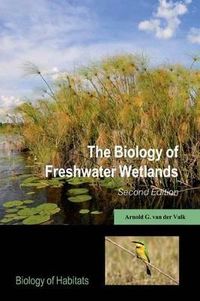
endast ny
The Biology of Freshwater Wetlands Upplaga 2
Global wetlands exhibit significant differences in both hydrology and species composition and range from moss-dominated arctic peatlands to seasonally-flooded tropical floodplains. They are increasingly recognized for the important services that they provide to both the environment and human society such as wildlife and fish production, nutrient filtering, and carbon sequestration. A combination of low oxygen levels and dense plant canopies present particular challenges for organisms living in this aquatic habitat. This concise textbook discusses the universal environmental and biological features of wetland habitats, with an emphasis on wetland plants and animals and their adaptations. It also describes the functional features of wetlands - primary production, litter decomposition, food webs, and nutrient cycling - and their significance locally and globally. The future of wetlands is examined, including the potential threats of global climate change and invasive species, as well as their restoration and creation. This new edition maintains the structure and style of the first, but is fully updated throughout with new chapters on invasive species, restoration/creation, global climate change, and the value of wetlands.
Upplaga: 2a upplagan
Utgiven: 2012
ISBN: 9780199608959
Förlag: OUP Oxford
Format: Häftad
Språk: Engelska
Sidor: 296 st
Global wetlands exhibit significant differences in both hydrology and species composition and range from moss-dominated arctic peatlands to seasonally-flooded tropical floodplains. They are increasingly recognized for the important services that they provide to both the environment and human society such as wildlife and fish production, nutrient filtering, and carbon sequestration. A combination of low oxygen levels and dense plant canopies present particular challenges for organisms living in this aquatic habitat. This concise textbook discusses the universal environmental and biological features of wetland habitats, with an emphasis on wetland plants and animals and their adaptations. It also describes the functional features of wetlands - primary production, litter decomposition, food webs, and nutrient cycling - and their significance locally and globally. The future of wetlands is examined, including the potential threats of global climate change and invasive species, as well as their restoration and creation. This new edition maintains the structure and style of the first, but is fully updated throughout with new chapters on invasive species, restoration/creation, global climate change, and the value of wetlands.
Ny bok
787 kr828 kr
5% studentrabatt med Studentapan
Begagnad bok (0 st)
Varje vecka tillkommer tusentals nya säljare. Bevaka boken så får du meddelande när den finns tillgänglig igen.



